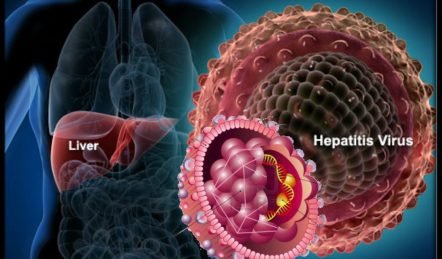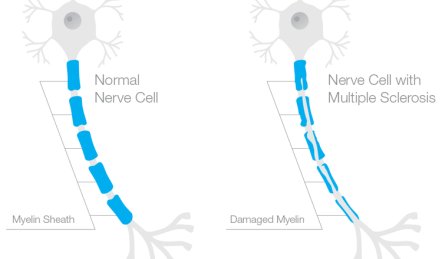Uncommon Signs of Multiple Myeloma You Should Know
A multiple myeloma is an uncommon form of blood cancer, but it doesn’t mean it should go unrecognized. In the US alone, 1 in 132 individuals is diagnosed with multiple myeloma, which means the odds of being diagnosed with the disease are lower than other forms of cancer. But this doesn’t make the disease any less important when recognizing the signs and symptoms.
Remember that the key to a better prognosis of any form of cancer is early detection. If you have the awareness and knowledge of the signs of symptoms of multiple myeloma, the sooner you can seek treatment, the chances of successful treatment increase. This knowledge is a life-saver for you and a loved one.
So what are the distinctive signs of multiple myeloma that you should know? You should know that multiple myeloma may have uncommon signs that may go unnoticed at first because it would seem like not an immediate concern. So let’s learn more about this disease — its common signs, less common symptoms, treatment, and many more.
What is Multiple Myeloma?
But first, what is multiple myeloma? It is a type of blood cancer that starts with the plasma cells. The plasma cells are responsible for fighting the antibodies like bacteria and viruses to defend the body from infection. Multiple myeloma builds up when abnormal plasma cells build up in the bone marrow.
As a result, the blood cells cannot function well, the immune system gets affected, and the cancer cells reproduce quickly. The rapid production of cancerous cells or otherwise called myeloma cells overpowers the production of healthy cells in the bone marrow. 1
Common Signs of Multiple Myeloma
- Bone pain in the spine, chest, lower back, or ribs is the most common symptom that may worsen over time. The pain worsens when the person moves around.
- Frequent infections (like flu)
- Weakness, numbness, or tingling sensations in your legs
Once you notice several of these symptoms mentioned above which have been occurring for a couple of weeks, consult with a doctor right away. You may not experience all the symptoms because multiple myeloma manifests differently for each person. In this disease, no two cases are exactly alike.
But having at least two of these symptoms is a warning that you should seek help right away as the myeloma cells reproduce quickly. Furthermore, other cases of multiple myeloma may be asymptomatic; in other words, a person may not experience any sign or symptom. In some cases of multiple myeloma, some patients only experience symptoms when the cancer is in the later stages.
Less Known Signs of Multiple Myeloma
Now that you’re aware of the common signs of multiple myeloma, it’s time to familiarize yourself with the less known signs of the disease. Keep in mind that multiple myeloma has a long list of symptoms that may go unnoticeable in some cases.
Some patients even develop other conditions as a complication of multiple myeloma as the disease progresses. One of the common diseases that develop in persons with multiple myeloma is amyloidosis. Amyloidosis is the abnormal buildup of proteins in the body. Amyloidosis leads to organ injury; as a result, vital organs stop working properly. 2
Symptoms of amyloidosis include:
- Purple spots all over the body
- Swelling issues like in the tongue, ankles, or legs
- Enlarged tongue with rippled-looking edges
- Nausea and vomiting
- Loss of appetite leading to weight loss
- Fatigue and weakness
- Painful joints
- Digestive issues like diarrhea
- Shortness of breath even in minimal exertion and when lying flat in bed
- Bloody stools
- Loss of appetite
- Unintentional weight loss of more than 5 kgs (10 pounds)
- Skin changes like bruising, purple patches
- Difficulty swallowing
In addition, some patients may also experience hypercalcemia. Hypercalcemia is a condition wherein the calcium levels in the blood are in an abnormal range. Hypercalcemia occurs because the parathyroid glands have become overactive because of cancer. 3
As a result, hypercalcemia may show symptoms like:
- Excessive thirst
- Brain fog or mental fog
- Lethargy or confusion
- Upset stomach
These symptoms result from hypercalcemia, which may indicate the presence of cancer, especially multiple myeloma. That’s why even if the symptoms mentioned are hypercalcemia, these are also considered the unnoticeable signs of multiple myeloma.
In addition to the symptoms manifested by hypercalcemia and amyloidosis, some individuals with multiple myeloma may also experience repeated episodes of nosebleeds due to the condition called thrombocytopenia. Thrombocytopenia happens because of the overproduction of plasma cells which hinders the effectiveness of other body cells.
Diagnostic Tests to Confirm Multiple Myeloma
If the common and uncommon symptoms are mentioned above, see a doctor right away. Once you visit a doctor, you will undergo diagnostic tests to confirm the presence of multiple myeloma. What are the tests you can expect to go through?
- Bone marrow examination
- Image tests like MRI, X-ray, CT Scan, PET Scan
- Blood tests
- Urine tests
After the diagnostic tests are done, and the doctor confirms the presence of multiple myeloma, the disease is classified into stages to determine how cancer has progressed in the body. After that, treatment options will be suggested.
Treatment for Multiple Myeloma
There are many different treatment options for multiple myeloma, depending on the stage; here are some treatments a doctor may suggest:
- Targeted Therapy: This is a type of treatment where the goal is to kill cancer cells while saving healthy cells.
- Immunotherapy: This is a new treatment regimen for multiple myeloma with similar results to bone marrow transplants. It has a high potential for long-term cancer remission.
- Chemotherapy: Chemotherapy treatment involves administering chemotherapy drugs through the intravenous route. Chemotherapy treatment lasts for 4-6 months, depending on the progression of multiple myeloma.
- Bone marrow Transplant or Stem Cell Transplant: Since the bone marrow produces all the blood cells, including the plasma cells, replacing the bone marrow itself is the best option to stop the production of cancerous cells in the body. However, a bone marrow donor will be needed for the surgery.
- Radiation Therapy: Radiation therapy for multiple myeloma involves the use of high-energy rays to kill cancer cells. Radiation therapy is usually recommended to target the bones damaged by myeloma that has not responded to chemotherapy or other forms of treatment.

Learn More About Multiple Myeloma
Now that you’re aware of the signs and symptoms of multiple myeloma, you now know when to seek help if you experience any of the signs. Just like any other form of cancer, the key to long-term remission is early detection; when multiple myeloma gets detected early on, the better chances of full recovery.
If you need additional information about multiple myeloma, you can do more research online. What’s important now is that you already know the common and uncommon symptoms of multiple myeloma you should watch out for.
References:
1 Cancer Org – What Is Multiple Myeloma?
2 Mayo Clinic – Amyloidosis
3 US National Library of Medicine National Institutes of Health – Multiple myeloma/hypercalcemia








































